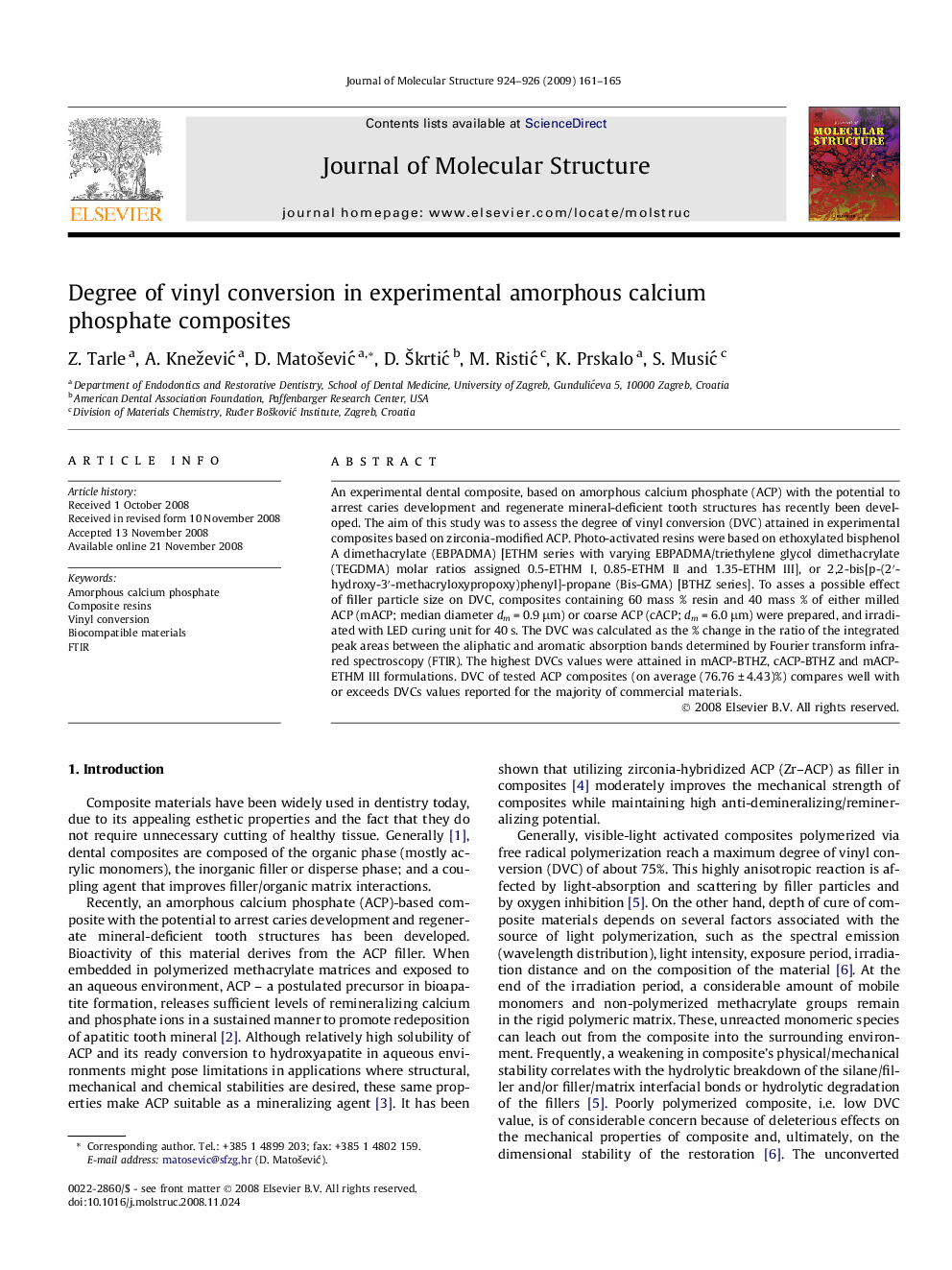| Article ID | Journal | Published Year | Pages | File Type |
|---|---|---|---|---|
| 1406639 | Journal of Molecular Structure | 2009 | 5 Pages |
An experimental dental composite, based on amorphous calcium phosphate (ACP) with the potential to arrest caries development and regenerate mineral-deficient tooth structures has recently been developed. The aim of this study was to assess the degree of vinyl conversion (DVC) attained in experimental composites based on zirconia-modified ACP. Photo-activated resins were based on ethoxylated bisphenol A dimethacrylate (EBPADMA) [ETHM series with varying EBPADMA/triethylene glycol dimethacrylate (TEGDMA) molar ratios assigned 0.5-ETHM I, 0.85-ETHM II and 1.35-ETHM III], or 2,2-bis[p-(2′-hydroxy-3′-methacryloxypropoxy)phenyl]-propane (Bis-GMA) [BTHZ series]. To asses a possible effect of filler particle size on DVC, composites containing 60 mass % resin and 40 mass % of either milled ACP (mACP; median diameter dm = 0.9 μm) or coarse ACP (cACP; dm = 6.0 μm) were prepared, and irradiated with LED curing unit for 40 s. The DVC was calculated as the % change in the ratio of the integrated peak areas between the aliphatic and aromatic absorption bands determined by Fourier transform infrared spectroscopy (FTIR). The highest DVCs values were attained in mACP-BTHZ, cACP-BTHZ and mACP-ETHM III formulations. DVC of tested ACP composites (on average (76.76 ± 4.43)%) compares well with or exceeds DVCs values reported for the majority of commercial materials.
